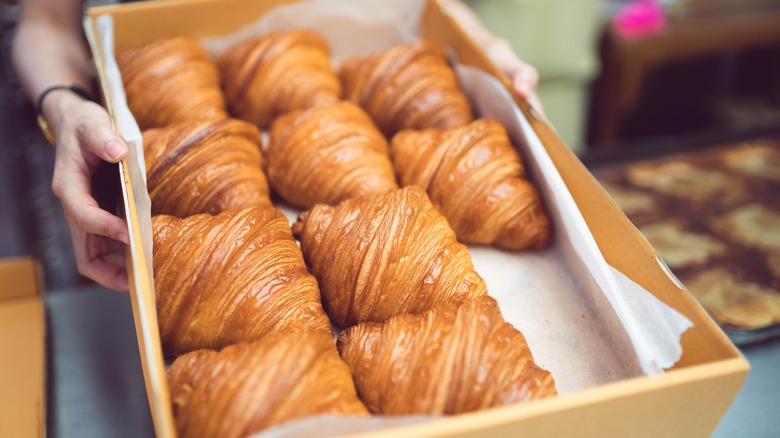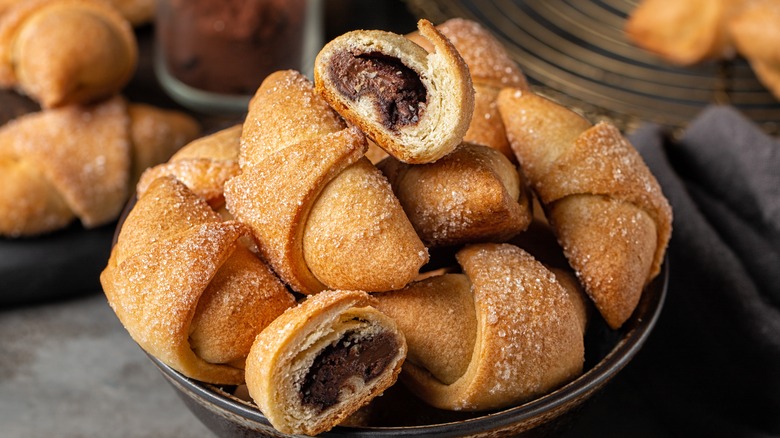The Austrian Origins Of France's Famous Croissant
Over the centuries, pastries have played a huge role in the kitchen. Egyptians, Greeks, and eventually the Romans used a kind of filo pastry to make cakes, tarts, and baklava. The pastry was even used to cover meat to protect it from the dry heat of the fire (via Great British Chefs). Today, there are several different kinds of pastry besides filo, including shortcrust, hot water crust, puff pastry, viennoiserie, rough puff, and choux, all of which differ in texture and flavor but all fall under the same "pastry" definition.
Those who are obsessed with bread love pastries for their ability to be sweet or savory, their delightfully delicate texture, and how they pair perfectly with any kind of filling! But one of the world's favorite pastries is the French croissant. The croissant is a light, buttery viennoiserie pastry which Le Cordon Bleu says is traditionally made from white flour and yeast and known for its fluffy crumb and flakey top. The croissant is lauded profoundly as a distinct and traditional French food, but what if we told you that the origins of this pastry scratch back much further than you might expect and that the bread may not even be French in origin at all?
Was it inspired by the kipfel?
While the croissant today, golden brown in color, laminated with layer upon layer of butter, and more breakfast bread than dessert, is considered wholeheartedly French, it actually has its origins in Eastern Europe. According to Smithsonian Magazine, the croissant only reached French bakeries in the 19th century. It was a crescent-shaped bake that was deeply reminiscent of the kipfel, which dates all the way back to Vienna during the 13th century.
Paris Unlocked says that the kipfel, also known as the kifli, kiflice, kifle, or kipferl is an Austrian pastry resembling a rugelach which would be filled with nuts; the food was particularly popular throughout Yiddish cuisine. Though the Australian dessert was made with heavy amounts of fat, like croissants, kipfels use much more sugar and are inherently denser than modern French pastry. Kipfels are still served today and, like the croissant, are often served as a sweet alongside coffee for breakfast. The Cest La Vie claims that it was the success of a Viennese Bakery in Paris that inspired French bakers to start experimenting with the recipe. Eventually, the bread grew light in texture and less sweet, blooming into the moon-shaped patisserie we know and love today.

